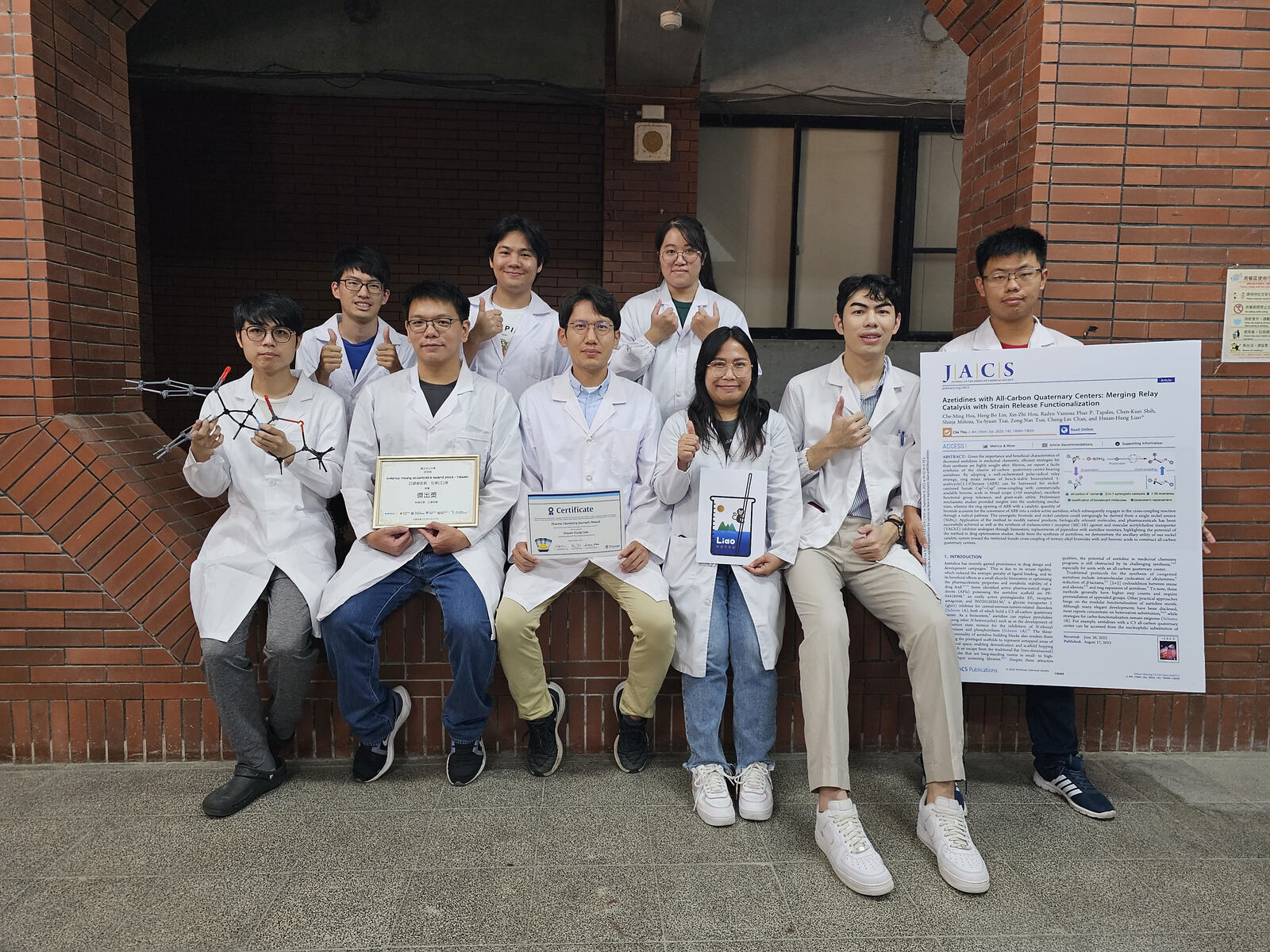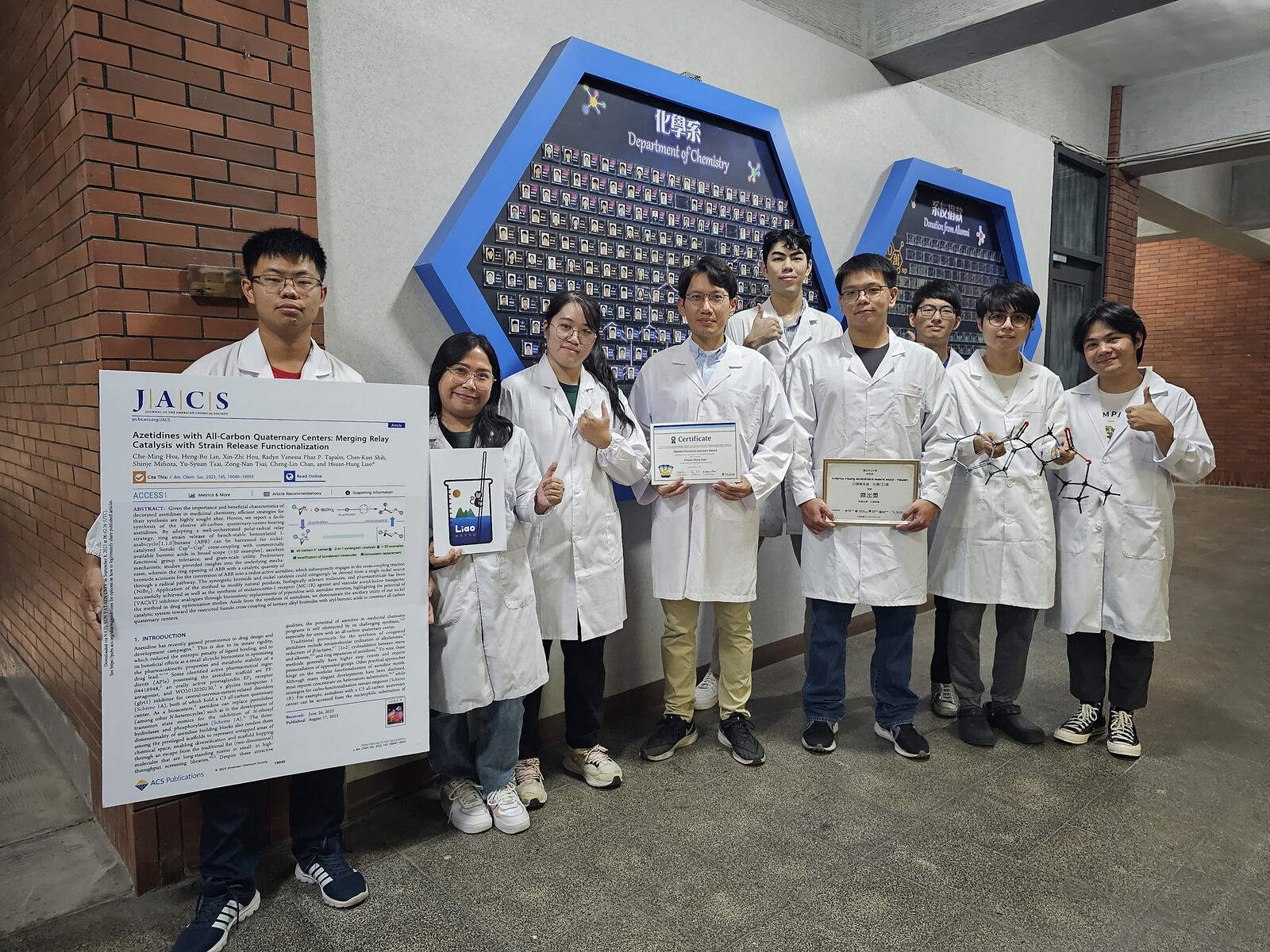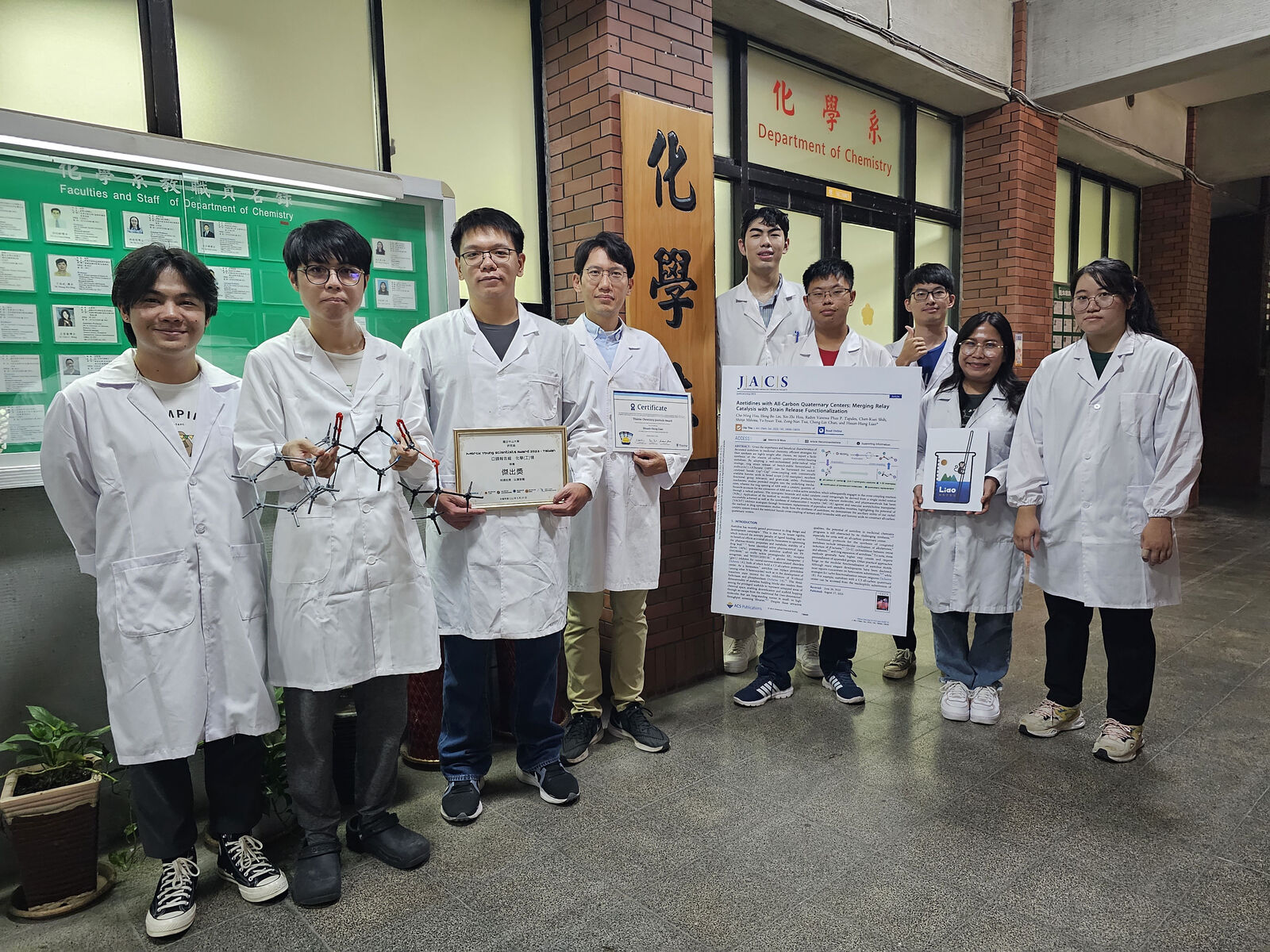NSYSU developed the world's first drug molecule synthesis strategy and was published in an authoritative international journal



2024-03-05
After four years of in-depth research, the group of Hsuan-Hung Liao, an associate professor in the Department of Chemistry at National Sun Yat-sen University (NSYSU) and a recipient of the Yushan Young Fellow Program, pioneered the world's first polar-radical relay catalysis strategy, which not only successfully prepared the key molecular structure "Azetidine," but also successfully applied it to the synthesis of small molecule drugs, and developed two new drug candidates. This innovative research result was published in the Journal of the American Chemical Society (JACS), an internationally renowned chemistry journal, attracting the attention of well-known Swiss pharmaceutical companies, who took the initiative to contact and invite research collaboration.
In the current drug research and development field, scientists use advanced experimental techniques and computer simulation tools to predict the optimal drug molecular structure. Among them, a molecular structure called "azetidine" has gained prominent attention in the pharmaceutical domain. Studies have found that azetidine can enhance the efficacy of drugs and reduce their side effects, making it a crucial key to developing the next generation of drugs. However, it is challenging to construct this unique structure using traditional synthetic methods, so it is currently difficult to apply it to the preparation of drugs, which means that many potential drug molecules are hard to synthesize successfully.
"In the past, synthesizing azetidine was not only complicated but also required the use of some harmful chemicals to the human body and ecology." Hsuan-Hung Liao mentioned that the research team tried using a "two-in-one catalyst" to carry out polar and free radical reactions simultaneously to minimize the amount of chemical reagents. After repeated attempts, a small amount of commercially available nickel dibromide reagent was finally used to provide two catalysts, nickel metal and bromine anion, which played their respective roles. This approach realized the Polar-Radical Relay Catalytic strategy, which completed the synthesis of azetidine in a one-pot protocol with a yield as high as 97%.
Hsuan-Hung Liao further pointed out that there are still many challenges in using azetidine for drug synthesis. In the future, he plans to overcome these difficulties using green energy technologies such as light and electricity and looks forward to promoting reform and progress in drug research and development through sustainable chemistry. Jyh-Tsung Lee, Chair of the Department of Chemistry at NSYSU, expressed that this innovative research not only provides a new catalytic strategy for the academic community but also contributes to the development of future drugs. "The scientific breakthrough is expected to broaden the application of azetidine in drug design and profoundly impact future drug research and development." Currently, this research result has attracted the attention and recognition of many research teams around the world. Notably, prominent Swiss pharmaceutical companies have had R&D personnel proactively contact Hsuan-Hung Liao's research team, hoping to invest in more in-depth exchanges at the academic level.
Associate Professor Hsuan-Hung Liao was recognized by the Thieme Chemistry Journal Award in 2023 for his outstanding research performance. Che-Ming Hsu, a doctoral student under his supervision and the research paper's first author, also demonstrated excellent presentations at the Merck Young Scientists Award organized by Merck & Co., Inc. in 2023 and was awarded the prestigious "Outstanding Award."
Note: The Journal of the American Chemical Society (JACS) is a top academic journal published by the American Chemical Society. The journal has been published since 1879 and is the most historical and authoritative publication in the field of chemistry. JACS mainly focuses on fundamental research in chemistry and is regarded by the global academic community as an authoritative and benchmark journal in chemistry and related fields.
